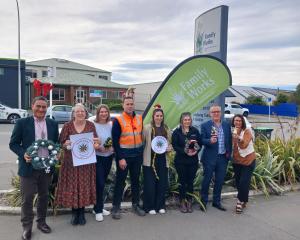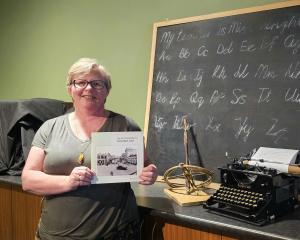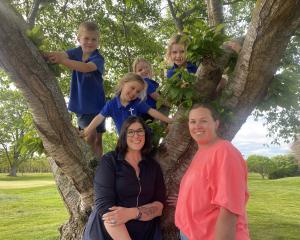Murray Bruce, whose family has farmed land next to the Waihao River for six generations, grows the tubers in the rich soil.
But his family's farming success would not have happened without the foresight of pioneers who built the Waihao box, which prevents the Waihao River flooding about 230ha of his land at the river mouth.
That block, only part of the family's landholding in the area, is on the opposite bank to the Waihao box, and is used to grow seed and cereal crops, carrots and the famous Willowbridge potatoes. His family first settled in the area in 1899.
The fact the potassium-rich soil grew outstanding potatoes was discovered shortly after Michael Studholme settled the Waimate area.
Mr Bruce says Te Waimate run workers discovered the rich soil while digging a dipping race for sheep and planted potatoes.
When they dug the first crop, they also dug up Canterbury mud fish which had burrowed into the soil during flooding.
"It is the only place in the world you can dig up fish and chips," Mr Bruce said.
Even now, Mr Bruce feels the box, along with more recent measures such as stop banks and drains, provides the security his family needs to successfully farm the riverside land.
Donald Hayman, whose family farmed in the Wainono area for about 100 years, served for many years as the chairman of the Wainono Drainage Board.
He has vivid memories of how much time the locals have spent helping maintain the box.
"We tried all kinds of wood over the years. There's no need to treat the wood because the sea water does this naturally. There's been Australian hardwood, poplar, radiata and oregon - we'd scavenge just about anything to keep the costs down."
Mick Laming, the current chairman of the Wainono Drainage Scheme committee, said the 100-year-old box was just as pivotal to the protection of land now as it was a century ago.
Over the decades, various less labour-intensive and possibly cheaper alternatives to the box have been considered, including pipes and even blasting out a channel.
"But after all these years, no-one can come up with anything better than the box, so hats off to those early pioneers - it might be relatively expensive to maintain but we simply can't afford not to now," he said.
Work on the box is now funded by a combination of an 80% contribution from local ratepayers, 15% from Environment Canterbury's Waimate district rating and 5% from the overall Environment Canterbury rate from throughout Canterbury.
Between $10,000 and $20,000 is spent on the box annually, but this can rise to up to $50,000 if a storm and or seas damage it.












